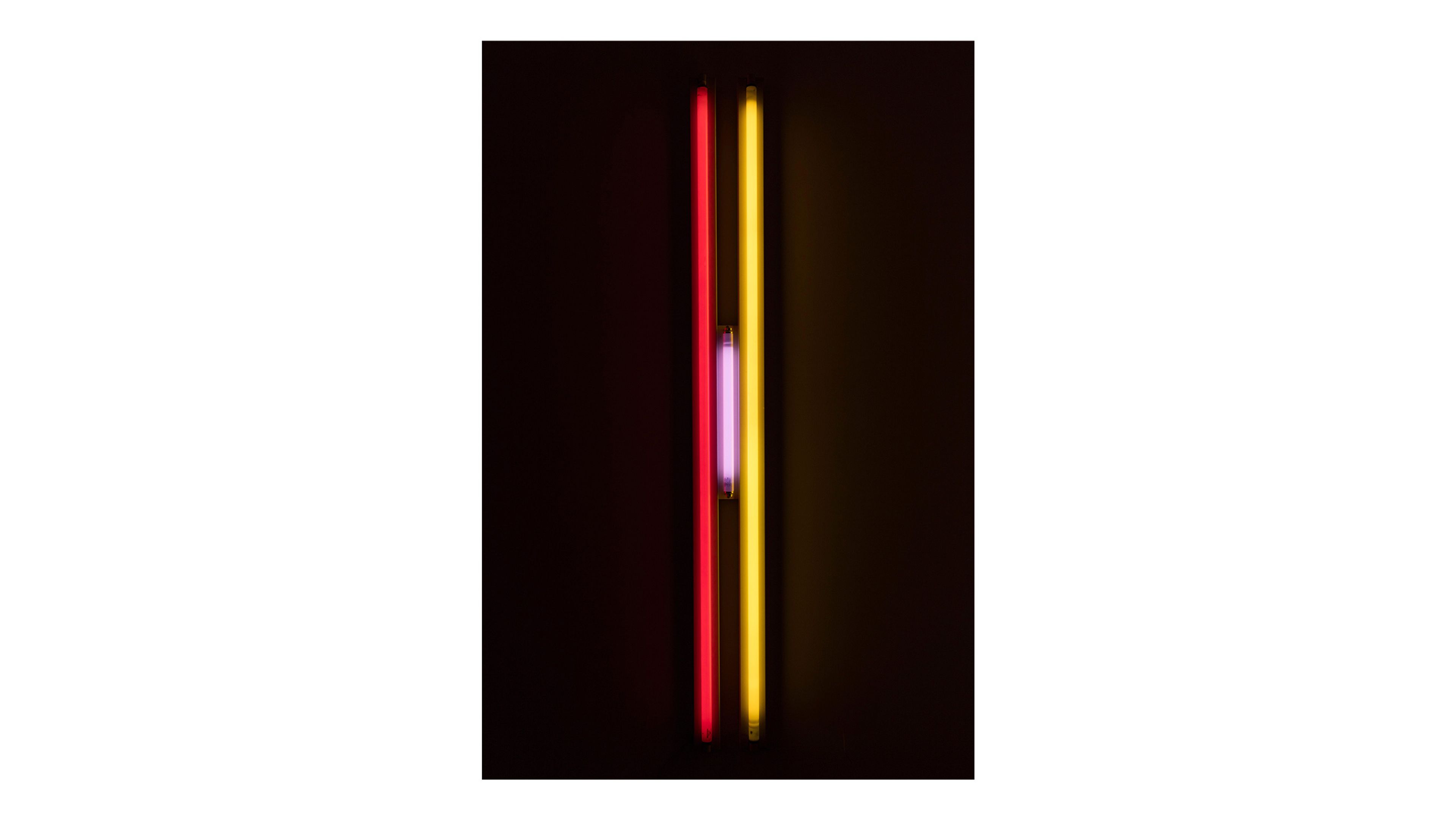June 13, 2019–April 12, 2020
Three works by Dan Flavin will go on view at the Institute of Contemporary Art (ICA), Miami. Puerto Rican light (to Jeanie Blake) 2 (1965), part of the ICA’s permanent collection, will be presented in its own gallery space along with two works loaned by the Estate of Dan Flavin on the occasion of this exhibition: four red horizontals (to Sonja) (1963), and a primary picture (1964).
Produced over three consecutive years, these works date from Flavin’s earliest experiments with fluorescent lamps, which he first employed in 1963 to create the diagonal of May 25, 1963. The artist’s installations (or "situations," as he preferred to call them) of light and color enabled him to explore how space can be established and redefined using light—an idea he pursued for the rest of his life. In a text published in Artforum in 1965, Flavin described his goal of working on "a sequence of implicit decisions to combine traditions of painting and sculpture in architecture with acts of electric light defining space."
An eight-foot vertical installation of red, pink, and yellow fluorescent light, Puerto Rican light (to Jeanie Blake) 2 is dedicated to a woman who was working at Green Gallery, in New York, at the time of Flavin’s seminal solo exhibition there in 1964; Blake told the artist that his fluorescent works reminded her of "Puerto Rican lights." This work was a gift to the ICA’s permanent collection by Joan and Roger Sonnabend.
Also being shown at the ICA, four red horizontals (to Sonja) is named for the artist’s first wife, Sonja Severdija. A horizontal composition of red fluorescent lamps hung at eye level on the wall like a painting, four red horizontals (to Sonja), like the other works in this show, is an important example of the development of Flavin’s practice towards the "site-situational" work he would become known for. A second loan from the Estate of Dan Flavin for this show, a primary picture is a rectangular wall piece composed of red, yellow, and blue light. The work makes formal reference to the format of the traditional canvas, or picture plane, and exemplifies what Flavin's friend and fellow artist Donald Judd described, in his 1964 article "Specific Objects," as "neither painting nor sculpture." A primary picture was first shown in the Green Gallery exhibition the year after it was made.
